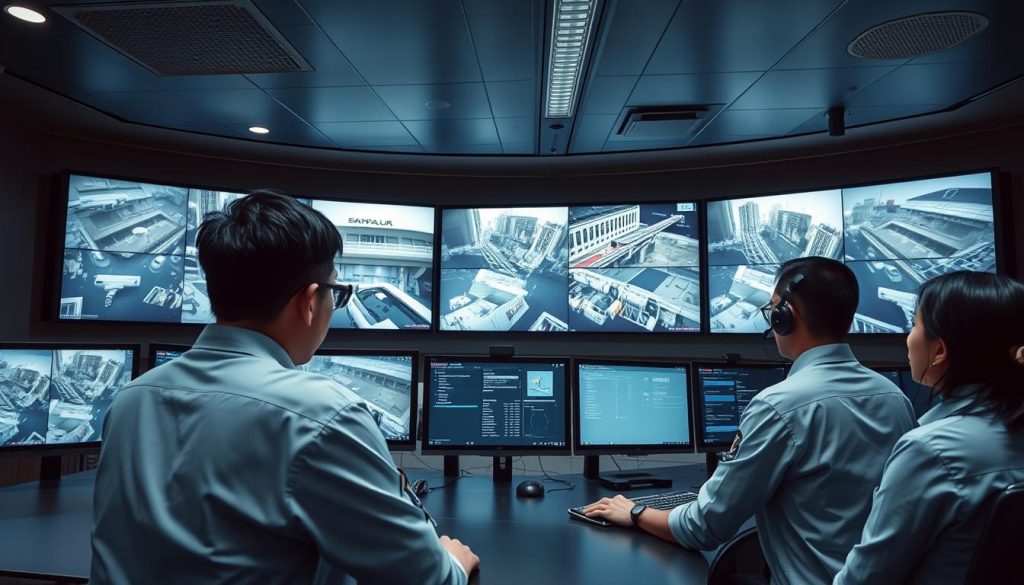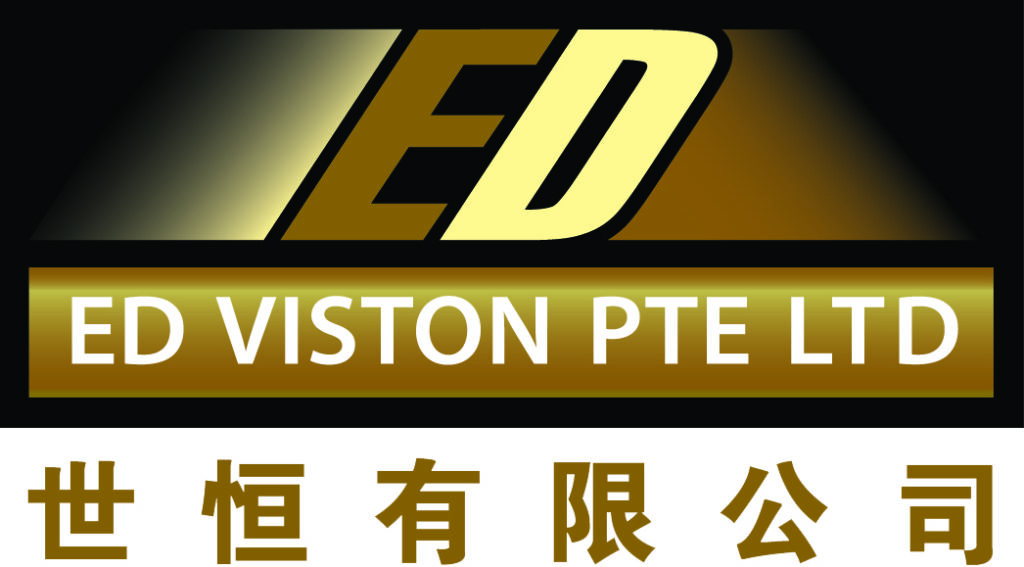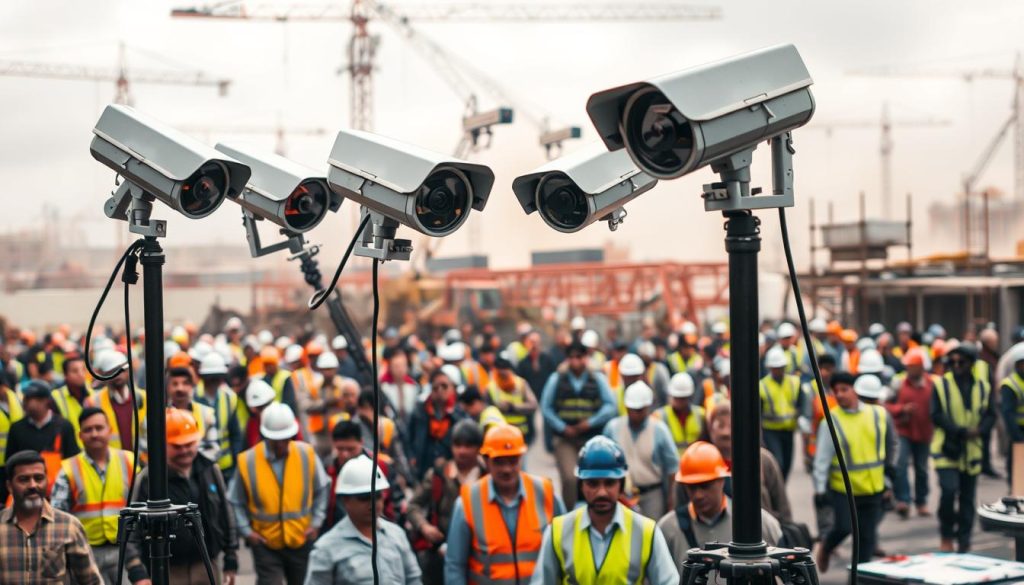Construction sites often face challenges like theft and unauthorized access. These issues can lead to significant losses. Modern surveillance systems have proven to be a game-changer. Studies show that using these systems can reduce theft by up to 80%.
In Singapore, new regulations are making security even more critical. Starting June 2024, projects over $5 million must have a Video Surveillance System (VSS). This mandate ensures better safety and compliance. High-resolution monitoring can also cut unauthorized access by 70%.
Beyond security, these systems boost operational efficiency. Managers report a 60% improvement in efficiency. The demand for rental equipment has also risen by 40%. For reliable solutions, consider Wen Hong Engineering’s CCTV systems.
Key Takeaways
- Surveillance systems reduce theft by up to 80% on construction sites.
- Singapore mandates VSS for projects over $5 million starting June 2024.
- High-resolution monitoring cuts unauthorized access by 70%.
- Operational efficiency improves by 60% with modern systems.
- Rental demand for security equipment has increased by 40%.
Why Job Site Cameras Are Essential for Construction Sites
Effective monitoring systems are transforming how construction projects handle security and safety. These tools provide real-time insights, ensuring that potential risks are identified and addressed promptly. With the rise of advanced technology, these systems have become a cornerstone for modern construction management.
Enhancing Security and Preventing Theft
One of the primary benefits of these systems is their ability to enhance security. Unusual activity detection has improved by 50%, significantly reducing theft and vandalism. By monitoring high-risk areas, these tools act as a deterrent, ensuring that unauthorized access is minimized.
Additionally, they help enforce safety protocols in real-time. For example, AI-powered systems can verify PPE compliance, ensuring that workers adhere to safety standards. This not only protects workers but also reduces liability for project managers.
Improving Site Safety and Compliance
Safety is a top priority in construction, and these systems play a crucial role. Elevated work areas can be monitored to prevent falls, while virtual perimeter alerts demarcate hazard zones effectively. This proactive approach ensures that accidents are avoided before they occur.
Compliance is another critical aspect. In Singapore, MOM requirements mandate the retention of accident investigation footage. These systems also align with PDPA guidelines for data storage, ensuring that sensitive information is handled securely.
- Monitor elevated work areas to prevent falls.
- Use AI for PPE compliance verification.
- Set up virtual perimeter alerts for hazard zones.
- Retain footage for accident investigations as per MOM guidelines.
- Ensure PDPA compliance for data storage.
Key Features to Look for in Job Site Cameras
Modern security systems offer advanced features tailored for demanding environments. These tools ensure robust protection and seamless operations, making them indispensable for any project. Let’s explore the essential features that set high-quality systems apart.
High-Resolution Video and Night Vision
Crystal-clear video quality is a must for effective monitoring. High-resolution systems capture every detail, ensuring no activity goes unnoticed. Night vision capabilities extend this functionality, providing 24/7 coverage even in low-light conditions.
Weatherproof and Durable Design
Outdoor environments demand rugged equipment. Weatherproof designs withstand rain, dust, and extreme temperatures, ensuring uninterrupted performance. Durable materials protect against physical damage, making these systems reliable for long-term use.
Remote Access and Real-Time Monitoring
Stay connected to your project from anywhere. With 4G/WiFi connectivity, you can access live feeds and control settings remotely. Platforms like myTikee offer cloud-based solutions, enabling seamless synchronization between devices.
- RTSP vs. ONVIF: Choose the right streaming protocol for your needs. RTSP offers flexibility, while ONVIF ensures compatibility across devices.
- Multi-User Access: Grant tiered access to contractors and subcontractors, ensuring secure collaboration.
- Data Encryption: Protect footage transmission with advanced encryption standards, safeguarding sensitive information.
- App-Based Controls: Adjust PTZ camera angles and settings effortlessly through user-friendly apps.
- Storage Options: Sync data between SD cards and cloud storage for redundancy and accessibility.
How Job Site Cameras Improve Project Management
Modern surveillance tools are reshaping how construction projects are managed. These systems provide real-time insights, ensuring smoother operations and better decision-making. With features like time-lapse videos and digital logbooks, managers can track progress and maintain accountability effortlessly.
Tracking Progress with Time-Lapse Videos
Time-lapse videos offer a visual timeline of the entire project. Managers can identify bottlenecks and ensure timelines are met. This feature also simplifies BCA submission requirements for audits, providing clear documentation of every phase.
Ensuring Accountability and Transparency
Visual evidence plays a crucial role in maintaining accountability. From verifying material deliveries to analyzing worker shift patterns, these tools ensure every detail is recorded. Conflict resolution becomes easier with clear snapshots of incidents.
Quality control is also streamlined. Managers can capture snapshots for QC documentation, ensuring compliance with standards. This level of transparency builds trust among stakeholders and enhances overall security on the site.
- Verify material deliveries with timestamped footage.
- Analyze worker shift patterns for better resource allocation.
- Resolve conflicts using visual evidence.
- Capture snapshots for QC documentation.
- Meet BCA submission requirements with detailed records.
By integrating these tools, managers can focus on critical areas of the project. The result is a 60% improvement in management efficiency, making these systems indispensable for modern construction projects.
Understanding Singapore’s Video Surveillance System (VSS) Requirements
Singapore’s construction industry is evolving with stricter security mandates. The Video Surveillance System (VSS) requirements, effective June 2024, aim to enhance safety and compliance on projects exceeding $5 million. These regulations ensure that high-risk zones are monitored effectively, reducing unauthorized access and theft.

Guidelines for Construction Sites Above $5 Million
For large-scale projects, VSS implementation is mandatory. The Ministry of Manpower (MOM) specifies high-risk zones that require continuous monitoring. These include tower crane bases, material storage areas, and mobile plant blind spots. Proper placement of equipment ensures comprehensive coverage and compliance.
Key Locations for Camera Installation
Strategic placement of cameras is crucial for effective monitoring. Studies by WCCTV highlight optimal installation points to maximize security. Here are the key areas to focus on:
- Tower Crane Bases: Ensure full coverage to monitor critical operations and prevent accidents.
- Material Storage Areas: Install cameras at recommended heights to oversee inventory and deter theft.
- Mobile Plant Blind Spots: Address visibility gaps to enhance safety during equipment operation.
- Entry/Exit Points: Use facial recognition technology to track personnel and visitors.
- Welfare Areas: Monitor these zones to ensure safety compliance and worker well-being.
By adhering to these guidelines, construction managers can meet VSS requirements while improving overall site security.
Choosing the Right Job Site Camera for Your Needs
Selecting the right monitoring system can significantly impact your project’s success. With various options available, it’s essential to understand which features align with your specific requirements. Whether you need fixed cameras for constant coverage or PTZ models for flexibility, the right choice ensures optimal performance.
Fixed vs. PTZ Cameras: Which Is Best?
Fixed cameras are ideal for continuous monitoring of specific areas. They provide reliable coverage and are often more cost-effective. On the other hand, PTZ (Pan-Tilt-Zoom) cameras offer flexibility, allowing you to adjust the view remotely. This makes them perfect for larger sites where multiple angles need to be covered.
When deciding between the two, consider your project’s size and the level of control you need. Fixed cameras are simpler to use, while PTZ models require more advanced setup but offer greater versatility.
Solar-Powered Cameras for Sustainable Monitoring
For eco-friendly solutions, solar-powered cameras are an excellent choice. These systems rely on 200W solar panels, ensuring 98% uptime even in challenging conditions. They are particularly useful for remote or offshore locations where traditional power sources are unavailable.
Here are some key considerations for solar-powered systems:
- Calculate solar needs based on Singapore’s insolation levels for optimal efficiency.
- Compare lithium and gel battery performance to determine the best fit for your project.
- Explore hybrid wind/solar options for offshore sites to maximize energy generation.
- Ensure MOM approval for temporary installations to comply with local regulations.
- Use weatherproof junction boxes to protect equipment from harsh environmental conditions.
By choosing the right system, you can enhance both security and sustainability on your project.
Cost-Effective Solutions for Job Site Surveillance
Finding affordable yet reliable monitoring solutions is crucial for modern construction projects. With system costs ranging from $5,000 to $20,000, it’s essential to balance quality and budget while maximizing ROI. Studies show a 3:1 return on investment from theft prevention, making these systems a smart choice for long-term savings.
Rental Options for Temporary Projects
For short-term needs, renting monitoring systems can be a practical solution. Providers offer tiered pricing based on project size, ensuring flexibility for small, medium, and large sites. This approach minimizes upfront costs while delivering the necessary features for effective surveillance.
When considering rentals, calculate the total cost of ownership, including installation and maintenance. Compare local and international brand warranties to ensure long-term reliability. Cloud storage costs per TB should also be factored in for seamless data management.
Balancing Quality and Budget
Investing in high-quality systems doesn’t have to break the bank. Look for durable designs with advanced features like weatherproofing and remote access. These elements ensure performance without compromising your budget.
To optimize costs, follow a lifecycle replacement schedule. Regular upgrades prevent outdated technology from becoming a liability. By prioritizing quality and planning ahead, you can achieve a cost-effective solution that meets your project’s needs.
Investing in Job Site Cameras for Long-Term Success
Modern security systems are more than just tools; they are long-term investments. With a 20% growth in industry adoption, these systems are becoming essential for construction projects. Integrating AI technology ensures smarter monitoring and better decision-making.
Over five years, these systems can save significant costs by preventing theft and unauthorized access. They also align with smart city initiatives, offering seamless integration for future-ready projects. Upgradable systems add resale value, making them a sustainable choice.
For eco-conscious projects, sustainable systems can earn BCA Green Mark points. This not only enhances security but also supports environmental goals. For reliable solutions, contact Wen Hong Engineering at +65 6013 5960.

